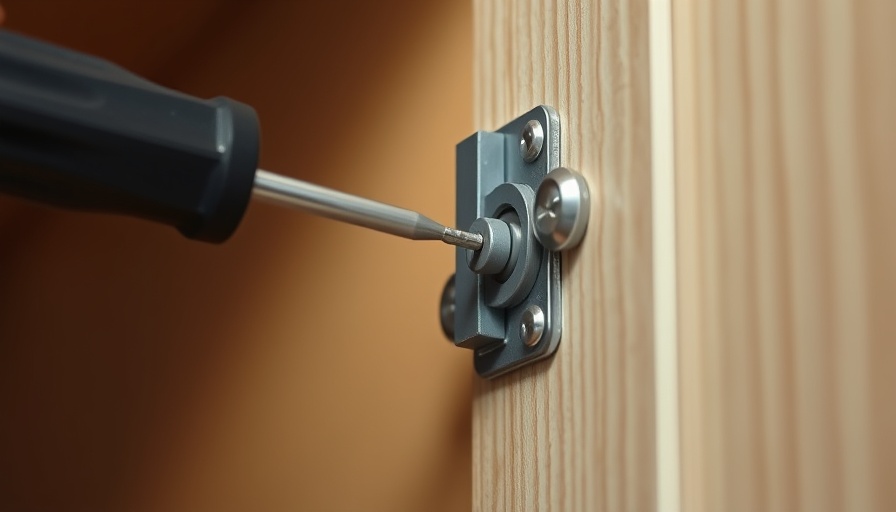
Transform Your Cabinets: Why Crooked Doors Matter
Have you ever walked into your kitchen and been greeted by the sight of crooked cabinet doors? It may seem like a minor issue, but misaligned cabinet doors can significantly detract from the aesthetic appeal of your space. Cabinets are more than just storage; they establish the tone of your kitchen and reflect the care you put into your home. In this article, we’ll explore simple steps to fix crooked cabinet doors—because everyone deserves a home that feels welcoming and well-maintained.
Your Toolkit: Essential Tools for Success
Before you start adjusting your cabinet doors, it’s vital to gather a few basic tools. A level and a Philips screwdriver will be your best friends during this process. The level ensures proper alignment, while the screwdriver allows you to make smooth adjustments. Investing a few minutes in preparation will save time and energy in the long run.
Step-by-Step Guide: Fixing Crooked Cabinet Doors
Aligning cabinet doors is a manageable DIY task, perfect for beginners. Here’s a detailed walkthrough of the four essential steps:
1. Confirm the Hinges Are Secure
Your first step is checking that the hinges of each door are securely mounted. If they are even slightly loose, the cabinet doors will misalign over time. Use your screwdriver to tighten the screws; this establishes a firm foundation before making adjustments.
2. Adjust the Depth for Perfect Alignment
Next, address the depth of the cabinet doors. Look for the screw furthest from the cabinet door; this is the depth screw. Depending on your hinge type, you may either adjust it by turning or loosening it to reposition the door, ensuring there's no gap between the cabinet door and the casework. An optimal fit immensely improves the visual appeal.
3. Tweak the Sides for Side-to-Side Alignment
If things still look off, it's time to consider the side screws. This adjustment helps to align the door vertically with others. By using the screw closest to the cabinet door, you can shift the door left or right to achieve the perfect fit in relation to neighboring doors.
4. Fine-Tune the Height for a Balanced Look
The final adjustment involves height. Locate the height screw, typically situated at the top or bottom of the hinge, to make necessary tweaks. Whether it’s an upward or downward movement, ensure all doors are flush, creating a harmonious and balanced appearance.
Common Misconceptions: Are DIY Adjustments Worth It?
Many may believe that such small adjustments aren't worth the effort. However, even a slight misalignment reflects neglect—a detail most visitors will notice. Moreover, properly aligned cabinet doors can enhance the functionality of your kitchen by ensuring they open and close smoothly, eliminating frustrating jams and disruptions. This DIY fix can lead to dramatic improvements without the need for a complete renovation.
Future Impact: Why Aesthetic Matters
Aligning your cabinet doors isn’t merely about aesthetics; it’s a form of self-care for your living space. A vast array of studies indicates that a well-organized and aesthetically pleasing environment has profound effects on mental well-being, providing a sense of control and tranquility. Therefore, embracing simple home improvements contributes positively not only to the look of your kitchen but also to your mood and lifestyle.
Conclusion: Take Pride in Your Space
By following these steps, you can not only fix crooked cabinet doors but also embrace a greater sense of pride in your home. It’s about the details—the small, thoughtful adjustments that create a living space you’re pleased to invite others into. So grab your tools, rally your motivation, and overcome the frustration of misaligned cabinets. Your home deserves it!
Don't let crooked cabinet doors weigh down your home's charm! For more DIY insights and tips to enhance your living space, subscribe to our newsletter today!
 Add Row
Add Row  Add
Add 




Write A Comment